In my last blog post, I left you with 2 intriguing middlegames which the engines assessed as dead equal and yet would only be the start of hostilities in a human game! I spent some time looking at these positions and I wanted to share my thoughts with you. Let’s start off with this one:
1. d4 Nf6 2. Bg5 d5 3. Nd2 Nbd7 4. Ngf3 h6 5. Bh4 e6 6. e3 c5 7. Bd3 c4 8. Be2 b5 9. Ne5 Bb7 10. f4 Be7 11. O-O O-O 12. a3 a5 13. Qe1 Ne8 14. Bxe7 Qxe7 15. g4 Nd6 16. c3 b4 17. Rf2 bxc3 18. bxc3 Rab8 19. Rg2 Ba8 20. h4 Rb2
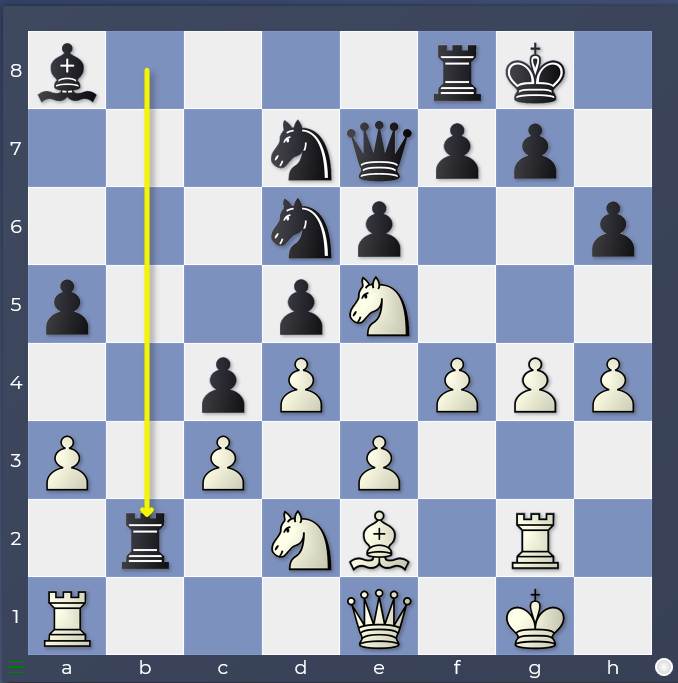
This was one of the positions where I stopped in the previous blog post, noting that the engines considered the position to already be a boring 0.00 draw! I was kind of intrigued how the game might continue since in a human game you’d be expecting the game to be hotting up!
Black has just invaded White’s seventh rank (20…Rb2). There are no concrete threats at the moment but this pressure will definitely cause some annoyance; for example, the queen on e1 is now tied to the defence of the knight on d2. From the other side, White has mobilised his kingside pawns and is ready to open the strike against Black’s kingside, most likely with the push g4-g5, targeting the “hook” on h6.
Perhaps the strangest thing about analysing with engines in such positions is that reacting *at the exact correct moment* is an inherent part of their assessments. I think human players act very much on their impression of the flow of the game. Good play for humans is about anticipating and breaking the opponent’s flow, stopping him from getting going. As Black in this position, I would most likely be suspecting that I have done something inaccurate because White’s kingside attack looks rather more threatening than Black’s queenside counterplay. For the engines however, the rhythm is completely different. They see that White’s attack can be smothered by complete accuracy at the very moment that the attack seems to be reaching its zenith!
21. g5
Hitting the h6-pawn and hoping to open either the g- or the h-file!
21. Nxd7 Qxd7 22. g5 was something I wondered about, not giving Black the chance to exchange on e5. However, after this exchange, the engines always consider that Black can play a move like 22…Kh8 Avoiding opening the h-file, confident that without the knight on e5, Black’s kingside is not under great pressure. 23. Nf3 followed by Ne5 would definitely worry me in a game, but seemingly not the engines!
21… hxg5
21… Kh8 is now met by 22. Bh5 with some irritating pressure.
22. hxg5
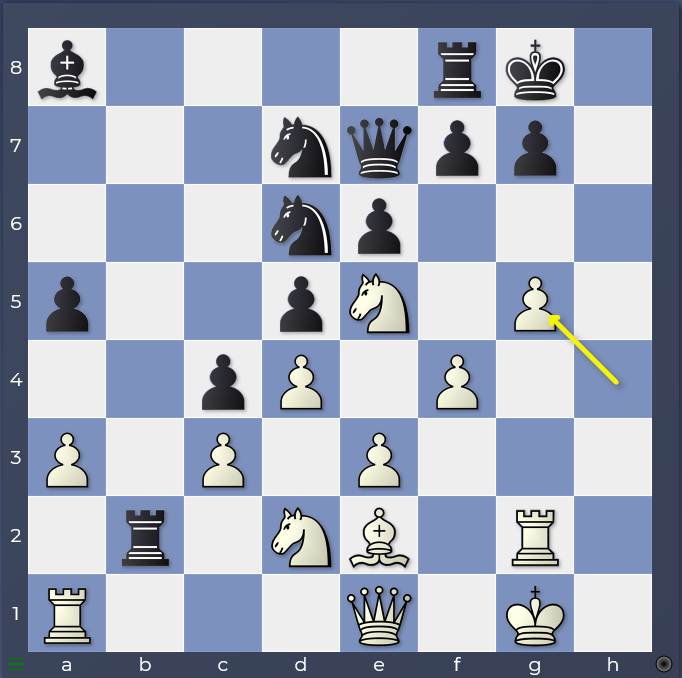
The engine main line.
22…Nxe5
22… Nf5 23. Nxd7 Qxd7 24. Bg4 is good for White: Bxf5 will follow followed by an invasion along the h-file. The engines need to play the risky-looking …Nxe5 to give Black’s queen a chance to spring out into the firing line of White’s attack!
23. fxe5 Nf5 24. Bg4
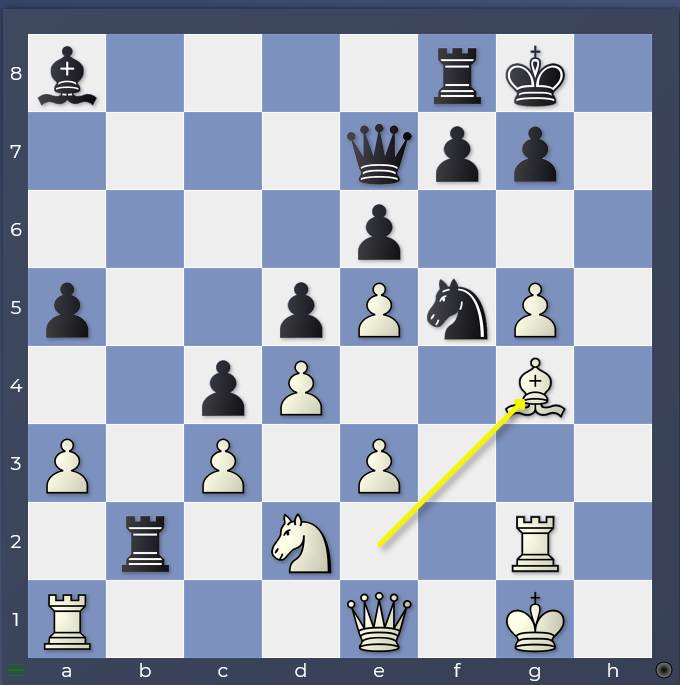
With a HUGE threat of Bxg5 followed by mate along the h-file!
24…Qxg5
Absolutely the only move with an evaluation difference of about 5.7! The black queen activates itself and combines irritation with defensive parrying of White’s queen!
25. Bxf5 Qxf5 26. Qg3 Qg6
It’s quite incredible that Black’s moves since 21.g5 are essentially only moves: any alternatives leave White with a significant to decisive advantage! Now it’s a draw by repetition as Black’s queen can parry any moves the white queen makes. For example
27. Qf4 Qf5 28. Qh2 Qh7

The second position is also pretty crazy!
1. d4 Nf6 2. Bg5 d5 3. Nd2 Nbd7 4. Ngf3 h6 5. Bh4 e6 6. e3 c5 7. Bd3 c4 8. Be2 b5 9. Ne5 Bd6 10. f4 Qc7 11. O-O a5 12. a3 O-O 13. g4 Nh7 14. Ndf3 f6 15. Ng6 Rf7
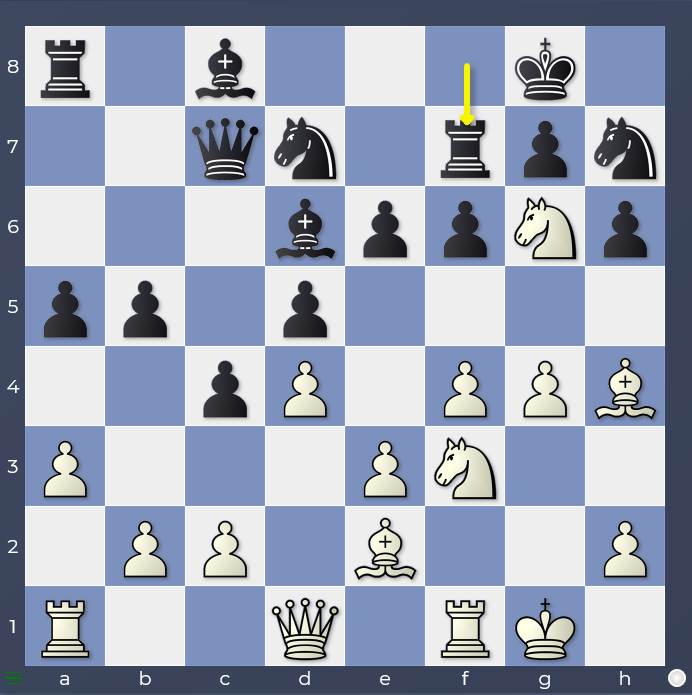
This was another position I left you with in the previous blog, explaining that the engines considered this as 0.00! The lines are once again pretty incredible!
16. g5
White feels compelled to keep on attacking lest Black play …Ndf8 on the next move forcing the exchange of the advanced white knight on g6. This move is White’s last chance to make something of it.
16. Bg3 Ndf8 17. Nfh4 was one thought I had, but the engines consider this a little better for Black (-0.14) 17…Bd7 18. c3 Be8 followed by …Nxg6 and …Nf8 neutralising White’s advanced pieces.
16… hxg5 17. fxg5 fxg5 18. Nxg5 Nxg5 19. Bxg5 Bxh2+
19… Nf6 20. Qe1 followed by Qh4 aiming for Qh8+ is terrible for Black.
20. Kh1 Qg3
Parachuting into White’s kingside with bishop followed by the queen is Black’s only way to avoid a catastrophe! My tactical antenna certainly aren’t telling me that Black should be able to remain unscathed… rather the opposite in actual fact! Not only does White have plenty of moves with which to attack the black queen, White will also draw the black king onto the open f-file with Rxf7. However… it works!
20… Nf6 is assessed as 3.1(!) by the engines 21. Bh5 Ra7 22. Bxf6 Rxf6 23. Rxf6 gxf6 24. Qf3 Kg7 25. Rf1 f5 26. Qg2 and it’s the weakness of Black’s king that proves fatal!
21. Rxf7 Kxf7 22. Bh4 Qh3
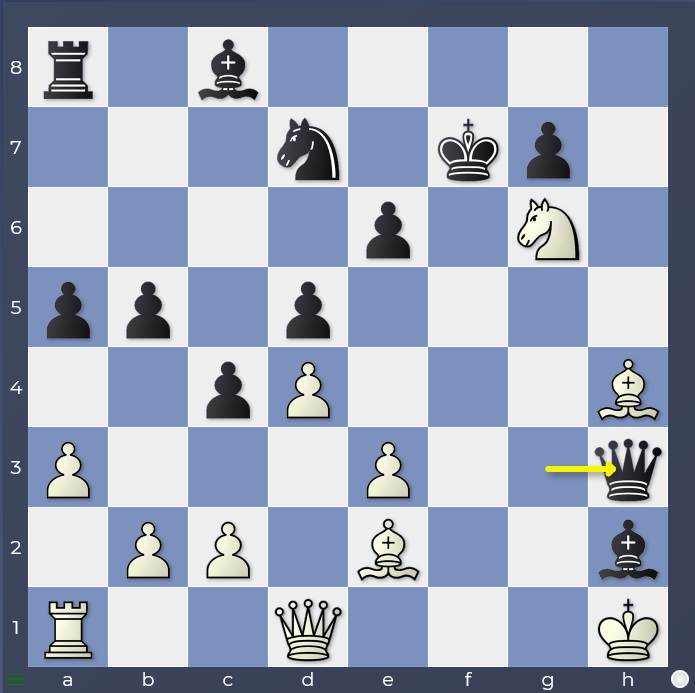
23. Bg4
Once again Black has an exceptionally narrow path to hold the draw, with only a couple of other paths that don’t ruin too much. As a human player, you would feel crazy – and *be*(!) crazy – to tailor your play around the conviction that such a narrow path exists and that you would be able to find it!
And there we see the real disconnect between human and engine play. Human players act on flow and narrative and try to shape and bend both to their advantage. The assessment of engines are shaped heavily by the discovery of an *exact, correct (most likely complicated) solution* at the *exact, correct (most likely difficult to visualise) moment* Humans only have a chance to explicitly play like this only after thorough opening preparation. Normally, I think that humans play such positions when fate pushes them into it… and then it’s also fate that decides whether it’s a good line or one of the many bad ones! Let’s see how this one is supposed to end!
23…Qxe3 24. Bh5
24. Kxh2 is also a peaceful 0.00! 24… Kxg6 25. Bh5+ Kh7 26. Qg4 Qe4 27. Qxe4+ dxe4 28. Rg1
24… Bd6 25. Ne7+ Kf8 26. Qf1+ Nf6 27. Bxf6 Qe4+ 28. Kg1 Qe3+ 29. Kh1
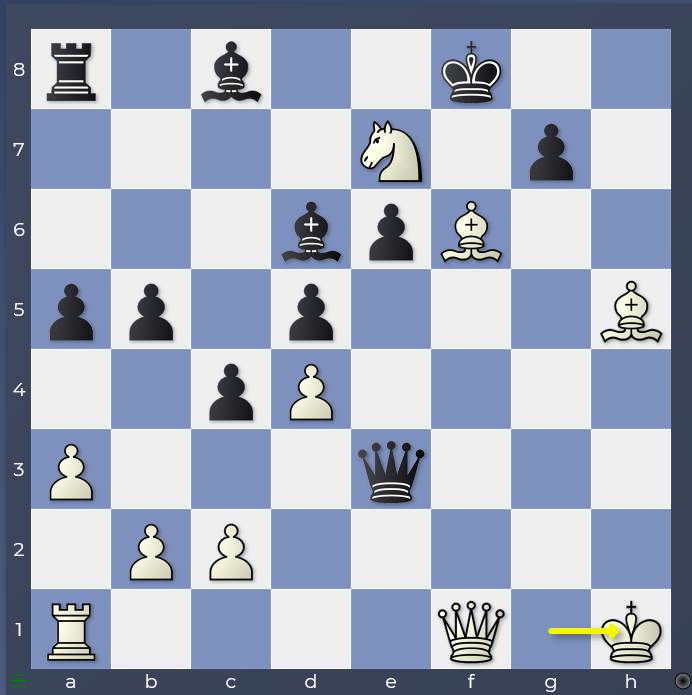
with a draw by repetition seen in about 20 of my engine games!


